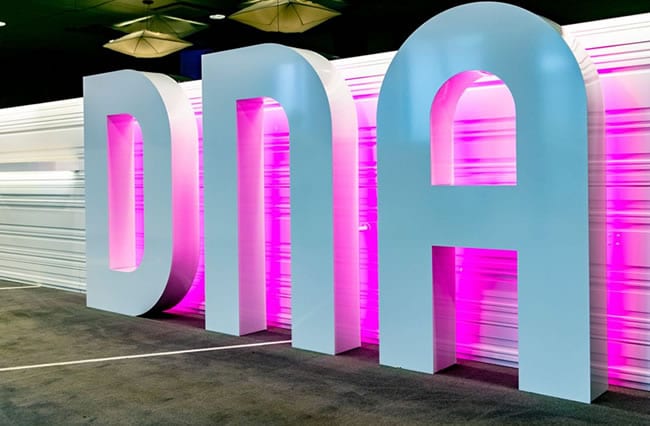Finnish mobile network operator DNA can be added to the list of operators across the globe offering the two main cellular LPWAN options for the Internet of Things. Since May 2019 the company offers both NB-IoT and LTE-M in its DNA network in Southern, Western and Central Finland.
That’s not every location in Finland but the main part of the country that also has a region north of the Arctic Circle. The main cities of Finland are in its Southern and Western region and most of its population lives in the Southern part. The DNA network now provides the broadest LTE-M IoT-technology coverage in the country with LTE-M and NB-IoT being spread across the same regions.
Typical use cases for LTE-M include logistics and security systems, as well as safety bracelets for the elderly
The Fins are heavy mobile users and Finland is the fastest growing mobile market in Europe. DNA ranked several years as the number one company in mobile data usage per SIM in the annual report of research company Tefficient. This year (data 2018) it ranked second after Zain Kuwait, even if DNA had a growth in the average usage per SIM per month from 15.9 GB in 2017 to 20.8 GB in 2018.

DNA is the third largest mobile operator in Finland, offering fixed and mobile telecom services. In April 2019 Norwegian Telenor Group announced it would acquire 54 percent of the shares in DNA and entered into agreements with the company’s two main shareholders, Finda Telecoms Oy and PHP Holding Oy.
The path to 5G at DNA
DNA is also investing in 5G. Earlier this year the European Investment Bank (EIB) and DNA signed an agreement for a loan that will be used for DNA’s investments in the 5G network.
DNA has a 5G network in Helsinki and is piloting a Fixed Wireless Access 5G technology in the city of Vantaa in a residential area with detached houses. Yet, also in the country of Nokia it’s of course far too soon for 5G, certainly in the scope of IoT (where commercial breakthrough will only happen once mMTC or massive Machine Type Communications is implemented in the standard as previously reported).
However, this isn’t a real issue as LPWAN is the fastest growing connectivity option anyway (IIoT connections included) and with NB-IoT and LTE-M added to the pack of standards ample use cases can be covered, from smart city applications, environmental monitoring, smart buildings and smart metering to various Industrial IoT applications, to name just some.
The NB-IoT readiness was already introduced to DNA’s 4G network back in April 2017. LTE-M has also been in customer-specific pilot use in DNA’s mobile network. The dawning age of 5G will create further opportunities for the use of IoT
The needs of the use case or project defined the choice for the needed standard(s) and of course coverage is important to begin with (in many countries deployments are still happening or planned). Within the cellular connectivity space, licensed (cellular) LPWAN connection growth also by far exceeds growth of any other cellular connection choice, including 2G, 3G, 4G and 5G for (at least) 5 more years and probably much more.
Cellular standards LTE-M and NB-IoT are expected to take over non-cellular options by 2023 according to several industry analyst such as ABI Research. LTE-M and NB-IoT also play a role in the roadmap to 5G. In 2018 both were included as 5G mobile standards with the goal to provide operators a path to 5G NR frequency bands while preserving NB-IoT and LTE-M deployments.
The LTE-M and NB-IoT offering of DNA
That brings us back to the LTE-M and NB-IoT announcement of DNA that clearly opted to follow this path with both cellular standards.
The operator announced an NB-IoT network in the spring of 2017 and by end 2017 its Narrowband-IoT coverage already reached 85 percent of the population whereby expansion of the service area happened based on customer needs. Now also the more powerful LTE-M technology is available in the same places the NB-IoT covers since then.
As a reminder: most European operators started with NB-IoT and are now starting to deploy LTE-M whereby both will co-exist as you can read in our interview with AllThingsTalk. In the US it’s the opposite: LTE-M network roll-outs started first but customers really (also) wanted NB-IoT which is now being offered as well with AT&T recently added to the US NB-IoT provider list.

With the LTE-M technology real-time, bidirectional IoT services are added on top of NB-IoT. That ‘real-time’ dimension is one of the touted benefits of LTE-M given its higher throughput with lower latency: the delays of LTE-M are remarkably short (10–15 ms) compared to the NB-IoT option (1.6–10 s) DNA reminds (NB-IoT in general can be seen as the most direct answer of the cellular industry to non-cellular LPWAN standards such as LoRaWAN and Sigfox).
So, DNA IoT customers now have two – cellular – LPWA options to choose from to pick the technology that is most suited to their needs to increase the lifespan, energy efficiency and cost efficiency of their IoT devices.
DNA explains the differences between LTE-M and NB-IoT to its customers by, among others, emphasizing the fact that LTE-M technology enables significantly higher data transfer speeds and volumes for IoT services with LTE-M able to transfer data symmetrically both ways at a maximum rate of 1 Mbps. As you know LTE-M is also a better fit for moving ‘things’. DNA: ‘devices connected to LTE-M can move from one place to another without losing the data connection’.
Yet, obviously also the benefits of NB-IoT are emphasized: such as low(er) energy consumption and high reliability in areas with coverage challenges to name a few. DNA provides some more details and typical use cases for both in its announcement.
DNA started working with the IoT platform of Cisco Jasper for the introduction of a new DNA Connectivity IoT service to open global IoT ecosystem opportunities for Finnish companies in 2018.
DNA Connectivity IoT subscriptions can be managed by corporate clients via the DNA Control Center user interface provided by Cisco Jasper.

